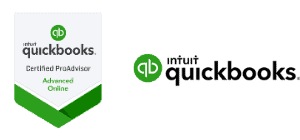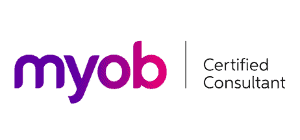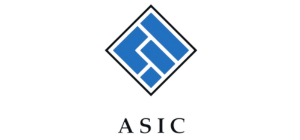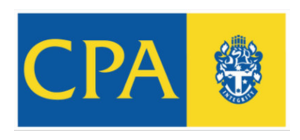STUDENT TAX RETURN
Are you under 21 years old and need help with your tax? Tax return for U21s is just $89*. Don’t want to come in? Click below and start your tax return online.
*Excluding Tasmania and ACT
* Not available for individuals with investments, cryptocurrency or multiple payment summaries.
Leeton & Griffith offices $79* for under 21 years old

TAX RETURN SERVICES FOR UNDER 21S
Getting your first job and earning your own money is an exciting milestone in your life. You can spend your cash on whatever you’d like. Earning a wage also includes sorting out your Tax File Number, getting a bank account, getting paid superannuation and paying tax.
Upfront
Guaranteed Pricing
Satisfaction
Guaranteed
Assistance
Anytime
Pre-appointment
Tax Checklist
FAQ
You can talk to your consultant prior to your appointment and they will advise what you should bring, some of which might include:
- Tax file number
- Bank details (BSB and account number) to receive any refund owed
- Your Medicare card or number
- PAYG Payment Summaries (previously Group Certificates)
- Payment Summaries from Centrelink for example, Newstart, Youth Allowance, Disability Pension
- Eligible termination payments
- Any interest earned from bank accounts
- Share dividend statements
- Any money made from the sharing economy – for example, if you’re an Uber driver, or renting out your home on AirBnB or Stayz.com
- Any money made on eBay or other websites
Any cash payments you received - Annual tax statements from trusts, managed investments, property and cash management trusts
- Income and expenses from investment properties
What Are Tax Deductions?
If you pay tax, then the ATO will allow you to make claims on your expenses to earn your income. Claiming deductions at tax time means that you will receive money back from the ATO on the tax that you paid during the year. The more tax claims you can make, the more money you will receive back from the ATO.
Claims can be large or small, and can range from anything from laundry and cleaning expenses, the cost of work uniforms and self-education costs to larger, more complex claims such as motor vehicle and home office expenses. Many people use Tax Accountants because they can be assured that they are making all of the claims they’re entitled to in order to claim back money their employer has paid to the ATO during the year for their personal income tax.
What Do I Need To Bring?
Making a claim? You’ll need to back it up with proof. Your ITP Tax Accountant will explain what you can and can’t claim and guide you the whole way through. Bring your receipts with you, as well as bank statements, car long-books, travel diaries and tax invoices that can back up your claims.
Don’t forget:
- A motor vehicle log book or diary for car expense claims
- Receipts from charity donations (unless you get a ticket to win something in return, those ones don’t count)
- School building levies and library funds donations
- Interest and fees on investment loans
- Accountancy fees charged for previous year’s tax return
- Income protection insurance
- Sickness and accident insurance
- Private health insurance annual statements outstanding
- Out of pocket medical expenses for disability aids, aged care and attendant care only in excess of $2,377. (2019 is the last year these expenses are claimable
- Details of your student loan
How Much Tax Do You Pay If You Have More Than One Job?
You may have more than one part-time job, come tax time may be a little confusing. As an Australian resident, you may earn under $18,200 in which you don’t have to pay tax, but if you have a second job, you may earn over the threshold and will attract tax.
If you work more than one job, the ATO will look at your total combined income to work out how much tax you need to pay regardless of the amount of jobs you have. It’s best to be organised and make sure you have set aside the correct amount for tax, rather than have to pay extra at the end of the year.
What Is The Tax-Free Threshold?
Your first $18,200 of your yearly income is tax free. This is called the tax-free threshold. You will still need to claim the tax-free threshold on your primary job to reduce the amount of tax withheld if you do start to earn over $18,200 during the year.
When you start a job, your payer (employer) will give you a Tax file number declaration form to complete. Centrelink is also a payer and they will give you this form if you apply for their payments.
You tell your payer you want to claim the tax-free threshold by answering “Yes” at question 8 ‘Do you want to claim the tax-free threshold from this payer?’
How Much Is The Tax-Free Threshold A Week?
It’s important to keep track of how much you earn in the year. A pay rise, even small, may tip you over the tax-free threshold. You should be sure that your employer is putting tax away for you each pay time if required, as you want to avoid a tax bill.
To earn $18,200 a year, you will need to earn $350 a week, or $700 a fortnight, or $1,517 a month. When your taxable income exceeds the tax-free threshold you pay tax on the excess.
When completing your tax file number declaration form, you should typically only claim the tax-free threshold from your primary source of income, or in other words, the job that earns you the higher salary. If you start a second job then you would answer “No” at question 8 ‘Do you want to claim the tax-free threshold from this payer?’
It’s important to know how to report your income on your second job so that you’re not caught short.
How Much Can You Earn Before Paying Tax?
How much you are taxed depends on how much you earn. If you earn over $18,200, you’ll need to pay 19 cents per dollar in tax that you earn over $18,200. If you earn more than $37,000, you’ll enter the next tax bracket and will need to pay a higher rate of 32.5 cents per dollar you earn over $37,000. Earn over $90,001 and you’ll pay 37 cents per dollar. Over 180,001 and you pay 45 cents per dollar.
The $18,200 tax-free threshold is equivalent to:
- $350 a week
- $700 a fortnight
- $1,517 a month
The good news is, that you’ll be able to claim deductions to reduce the amount of tax you’ll need to pay if you earn over the tax-free threshold. You do this in your annual tax return.
How do I Repay My HECS-HELP Debt
Your HECS-HELP debt repayments will take effect, in most instances, once your income exceeds the compulsory repayment threshold, even if you’re still studying and includes any unpaid HECS-HELP, FEE-HELP, VET FEE-HELP, OS-HELP, SA-HELP and VET Student Loans debts.
The ATO will automatically require you to pay back either all or some of your HELP debt through the tax system once you earn above the compulsory repayment threshold.
The compulsory repayment threshold is:
- $51,957 for the 2018-19 income year
- $45,881 for the 2019-20 income year
You can make a voluntary repayment to the Australian Taxation Office (ATO) at any time. Your tax agent will help you calculate how much you need to pay back.
What If I Can’t Pay My Tax Bill?
You’ll still need to lodge your activity statements and tax returns on time, even if you can’t pay by the due date. You’ll avoid a penalty for failing to lodge on time and show the ATO that you’re aware of your obligations and doing your best to meet them. In many cases, the penalties may actually be higher than the tax you have to pay. The current penalty rate is $210 per month up to a maximum of five months. Therefore if you lodged a BAS or tax return five months after its due date, you could be up for a fine of $1,050.
Your ITP Professional can assist with setting up a tax payment plan that meets your circumstances and you can pay your debt off in instalments. Keep in mind, you may need to pay interest.
It’s never a good idea to avoid the ATO, and failing to pay tax or lodge false claims may result in fines and even jail time.
What is the Tax Deadline?
The deadline for lodging a tax return in Australia is 31 October. If you’ve booked an appointment with a tax accountant, you may have up to 15 May to lodge your tax return as tax agents are granted extension by the ATO for their clients.









